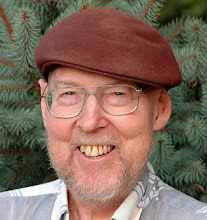4. Eliminate management, organization charts, job descriptions, and hourly wages.
I enjoy people who approach life from less than standard approaches. I’ve regularly made suggestions in the organizations I’ve been apart of that have led people to look at me askance.
A good friend of mine recently sent his son to talk to me about his career because, as he told his son, “Rich thinks out of the box and some of his ideas are downright hare-brained.”
So far in Bakke’s Joy at Work Top Ten I’ve been enthusiastic. But I must admit even I, when I read “eliminate management”, was taken aback.
Bakke’s #4 touches on one of the 7 paths that I’ve written about before--the smart and friendly systems path. Every organization develops systems. The trick is to dazzle people with your organization's smart and friendly systems.
Most nonprofits have management, organization charts, job descriptions, and categorize staff as hourly or salary. Each of these is so much a part of companies and nonprofits in the
But none of the standard organizational practices were handed down by God as part of the Ten Commandments and thus we are free to ask if they are smart and friendly systems. Do they really help your nonprofit transform the lives of the people you serve and do they really make your nonprofit to be a great work place?
While trying to create a fun work place at the energy giant, AES, Bakke noted that dividing workers into salary and hourly divided people which does not make for a fun work place. Bakke went on a campaign to put everyone in his company on salary. Of course, that’s against the law. The Fair Labor Standards Act was passed in the 1930s to protect hourly workers and to ensure they were paid overtime for work over 40 hours a week.
Bakke made working on a salary such a great system for workers, that almost everyone, including union workers, voluntarily joined the salary system. As a built-in safe guard, and to keep the company out of legal trouble, workers eligible under law to be hourly, could switch back to hourly any time they wanted.
Former hourly workers often discovered that they could work less hours and still get paid the same.
Do your systems, including managers, really make your nonprofit a smart a friendly workplace? If not, eliminate them and come up with smart and friendly systems.


